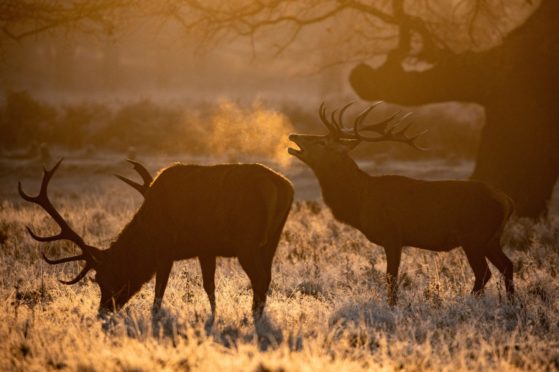A contract worth more than £10million has been awarded to cull Scotland’s deer population.
The arrangement, which is described by Forestry and Land Scotland as “the provision of services to assist in the management of deer and other wildlife”, has been split into five different lots to represent different geographical areas of the country.
Nine firms have been awarded the contract for the north region, worth £3million, with 10 authorised contractors taking on the operation in the east, worth £2.5million of the £10.5million total.
Forestry and Land Scotland has said the operation will be carried out humanely and cost-effectively, adding that the work may spread to include other animals, such as foxes, feral goats and feral pigs.
Culls will be carried out in areas which fall under the Scottish National Forest Estate.
A spokesman for Forestry and Land Scotland said: “It is widely accepted in Scotland that there is a need to manage deer numbers in order to protect the environment, biodiversity, commercial tree plantations, reduce road traffic accidents involving deer and, of course, for the welfare of deer themselves.
“The only difference this time is that instead of lots of smaller geographical-based contracts, we are bringing this together under one single Scotland-wide framework.
“The total deer cull figures under the new four-year Framework Agreement are on a par with previous years.
“This is not part of any re-wilding programme but is a normal part of our conservation and forest management practice.”
In the west, an additional nine have been selected by Forestry and Land Scotland which makes up just shy of 10% of the total contracts worth.
Forestry and Land Scotland has said that the latest figures reported by Scottish Natural Heritage (SNH) has shown “insufficient progress” towards the Scottish Biodiversity Strategy’s 2020 targets.
A spokeswoman said: “SNH leads a programme of work to promote sustainable deer management across Scotland, recognising the essential role it needs to play to help address climate change and biodiversity loss.
“Research shows deer numbers increased in Scotland from 1961 to 2001, but numbers have since stabilised because of increased culling, which is sometimes necessary to ensure healthy deer populations, reduce road traffic accidents and prevent significant damage to our agriculture, forestry and nature.”
She added: “Our recent Deer Progress Report showed that while challenges remain, significant progress has been made by landowners and managers.
“We continue to work with partners such as Forestry and Land Scotland, deer managers and environment groups to strengthen and develop approaches to manage deer across Scotland and meet the challenges of biodiversity loss and climate change.”
